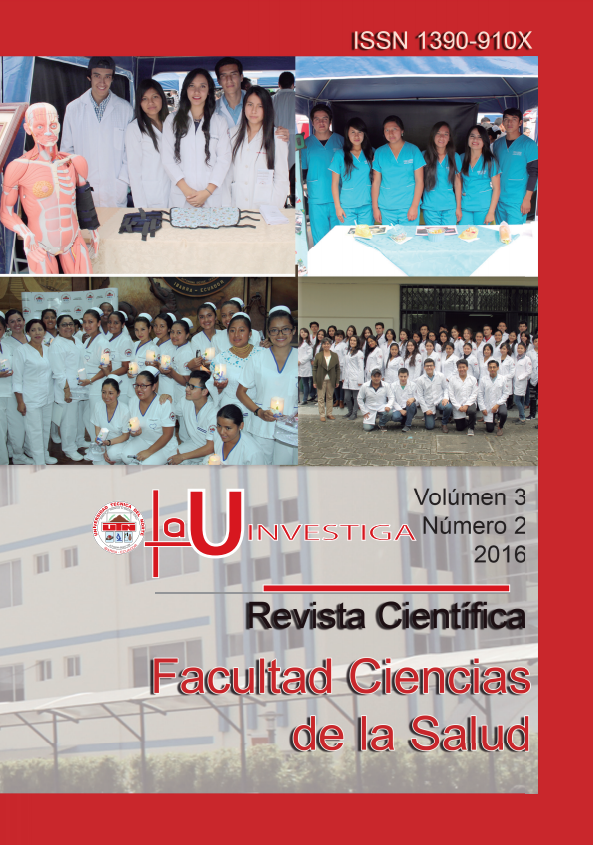La Postura Corporal y su Relación con Obesidad y Sobrepeso en Niños de 6 A 12 Años, Provincia de Imbabura.
The body posture and its relationship with obesity and overweight in children of 6 to 12 years, at the Imbabura province
Keywords:
Posture, Obesity, Hyper kinesis, Hyper lordosis, MusclesAbstract
La Postura corporal es la actitud adoptada por el cuerpo, por acción coordinada de los músculos para mantener la estabilidad o asumir la base esencial relativa al acomodo constante de movimientos.(1). El sobrepeso y la obesidad son factores de riesgo que generaran alteraciones del movimiento corporal humano, manifestado por alteraciones de la biomecánica. (2) El objetivo fue evaluar la postura en niños con obesidad y sobrepeso entre 6 a 12 años de la Escuela “Santa Luisa de Marillac”, del cantón Antonio Ante; se realizó un análisis de tipo descriptivo, de corte transversal donde se identificaron 29 niños con obesidad y sobrepeso, a quienes se les realizó el cálculo de Índice de Masa Corporal (IMC), test postural, plantigrafía, medición del Angulo Q y distancia intramaleolar. Los trastornos posturales en raquis más frecuentes fueron: del 100% de las niñas evaluadas el 58,8% presenta hipercifosis cervical, el 76% hiperlordosis lumbar y el 11% escoliosis; del 100% de los niños evaluados el 46,2% presenta hipercifosis cervical, el 75% hiperlordosis lumbar y el 30% escoliosis; en las evaluaciones de rodilla 42% de los niños presenta un valgo patológico y 58% pie plano; en las niñas se encontró que un 82% presenta valgo patológico y 65% pie plano. La obesidad y sobrepeso están relacionados a las alteraciones posturales de tipo cervical y lumbar, genu valgo, y pie plano; con predominio en niñas. Los infantes con sobrepeso y obesidad deben ser valorados, pues si se identifican trastornos físicos en edades tempranas, tendrán menos complicaciones en la adultez.
Downloads
Downloads
Published
How to Cite
Issue
Section
License
Copyright (c) 2016 Raquel Andrade Zumárraga, Verónica Johana Potosí Moya, María Teresa Escobar Beltrán, Daniela Alexandra Zurita Pinto, Grace Andrea Huaca Guevara

This work is licensed under a Creative Commons Attribution-NonCommercial 4.0 International License.
The authors retain the copyright and guarantee the journal the right to be the first publication of the work as well as licensed under a Creative Commons Attribution-NonCommercial-ShareAlike 4.0 International License that allows others to share the work with an acknowledgment of the authorship of the work and the initial publication in this magazine. Authors may separately establish additional agreements for the non-exclusive distribution of the version of the work published in the journal (for example, placing it in an institutional repository or publishing it in a book), with an acknowledgment of its initial publication in this journal.

La U Investiga by La U Investiga is licensed under a Creative Commons Reconocimiento-NoComercial-CompartirIgual 4.0 Internacional License.You can find permissions beyond those granted with this license athttp://revistasojs.utn.edu.ec/index.php/lauinvestiga/index





